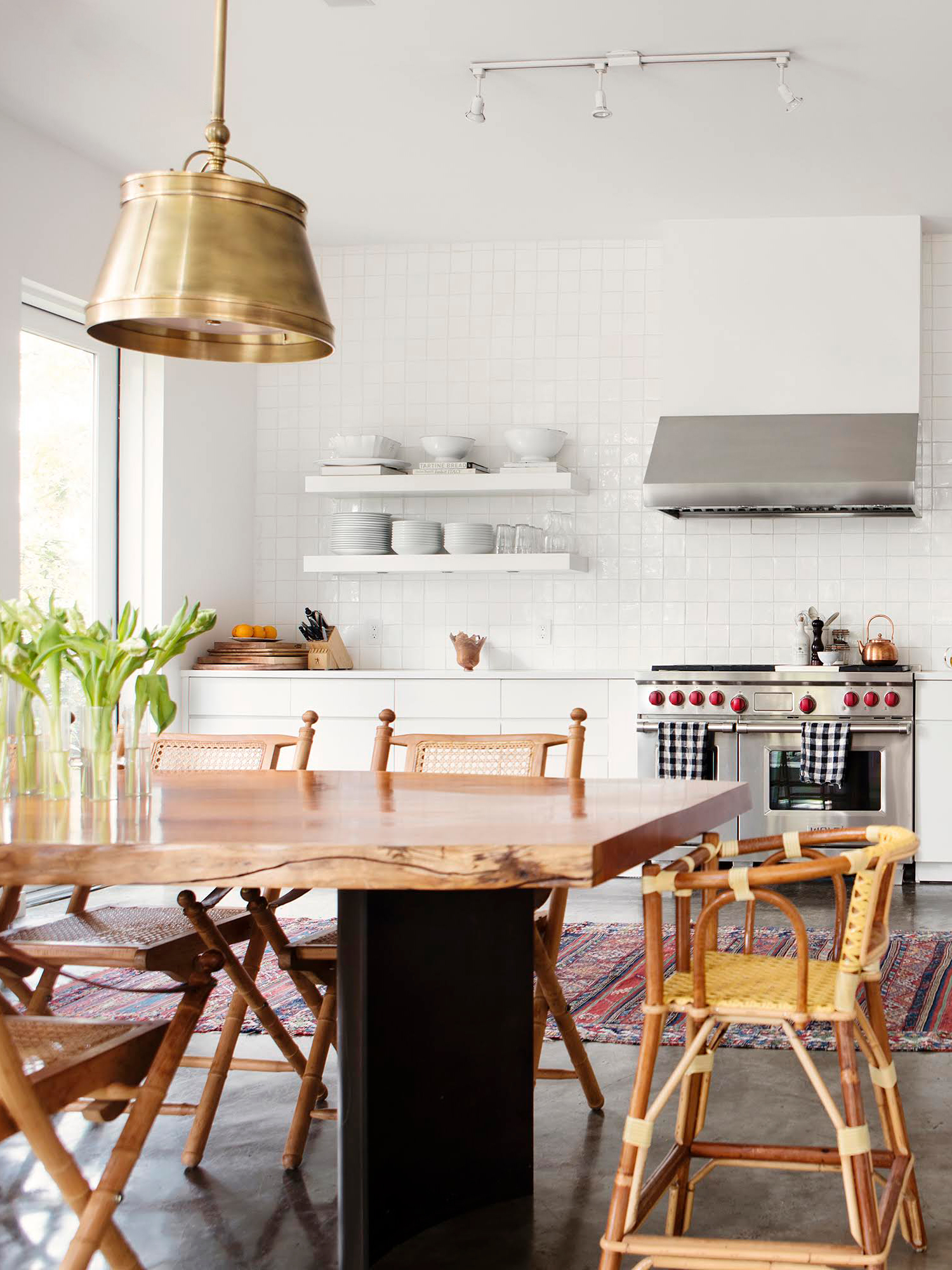We may earn revenue from the products available on this page and participate in affiliate programs.
Renovating can be a daunting process, so we asked Jean Brownhill, the founder and CEO of Sweeten, a platform that helps people find expert advice and get matched with vetted general contractors, for her best remodeling tips and tricks.
Every house party I go to or host myself ends up with most of the guests in the kitchen, even if it means squeezing in next to the stove. The smells, warmth, and cooking momentum act as a gravitational pull in everyday life. It’s no wonder it’s a natural room to renovate before others.
For some, myself included, this involves making sustainable choices, specifically using salvaged materials to add character while lessening the project’s impact on the planet. But the impact on your wallet can be substantially reduced as well. According to Justin Green, executive director of the nonprofit salvage center Big Reuse, cost savings can be considerable: “Salvaged plumbing, lighting, doors, windows, cabinets, and fixtures are usually more than 50 percent off.” When the three R’s—reuse, recycle, reduce—meet the fourth—renovation—anything can happen. See how three homeowners (myself included) made the most of reclaimed materials.
Purchasing a Secondhand Custom Kitchen

In 2007, I was working as an architect and had just bought my first house—a historic brownstone that needed a gut renovation. I knew my expectations were really high, but my budget was low. I went to the Green Demolitions website to choose a salvaged kitchen to reconfigure for my home. I scored a fully custom-built kitchen with oversized cabinets, wide drawers, appliances (including a Sub-Zero fridge!), a sink attached to a granite countertop, a Grohe faucet, hardware, even under-counter lighting. I picked it up in Connecticut.
I probably got a $100,000 kitchen for $8,000. I needed to get the stone recut and had to cut down one cabinet, but my contractor and I were able to totally reconfigure it in a way in which we used almost every piece. The Shaker-style cabinets were repainted. I liked that the cabinets were oversize. Two of them ended up going in the dining room.
Reclaiming Floors From a Broadway Production

Sandra and Michael wanted a larger place but loved living in their prewar apartment—they’d helped to build the community garden and it was the only address their young sons had ever known. They found a bigger home right in their building with the same great bones as their current unit, but the 90-year-old narrow kitchen (complete with original cabinets) and claustrophobic dining area needed an overhaul.
The couple had worked on sustainable design and production at Barnard College, and as cofounders of Fixup, a social enterprise repair service, they wanted to make thoughtful remodeling choices. The more functional kitchen and dining spaces they created involved changing the galley-style layout to allow the family to cook together, and moving a doorway to find space for a dishwasher. The doorway was converted to a pocket door made of reclaimed wood from Big Reuse.
The subway tile backsplash was fashioned from leftover tiles already purchased by a friend. “So not quite reclaimed, but at least saved from the landfill,” says Sandra. But the sustainable star is the kitchen floor—oak planks rescued from a Broadway production of Fiddler on the Roof, especially fun because of the couple’s background in theater. Now sanded and stained, the reclaimed floors provide a style statement and a great story.
Using One Slab of Wood in Multiple Rooms

Modernize. Ditch a clunky layout. Add a kitchen island. And do it before the baby arrives. Those were Tara and Brian’s main renovation goals after they bought a two-bedroom co-op (with a small office space). For Tara, adding the kitchen island was a nonnegotiable, and it turned out to be one of the crowning glories of the renovation. Their contractor had a reclaimed wood supplier in Pennsylvania, and the couple selected a big slab of walnut with a live edge.
To lend a sense of openness in the kitchen, Tara and Brian ditched the cabinets above the counter in favor of open shelving, using leftover walnut from the new kitchen island. The legacy of the walnut slab continued; after completing the kitchen, their contractor used the remainder to build three small shelves in the bathroom and more shelves for the home office.
Sustainable renovations call for creativity and flexibility, explains Green from Big Reuse: “You may have to alter a design around the salvaged pieces you find.”
See more stories like this: 7 Renovation Steps to Take Before Swinging the Sledgehammer Hiring the Wrong Contractor for Your Reno Could Cost You The One Step a Renovation Expert Never Skips (No Matter What)
